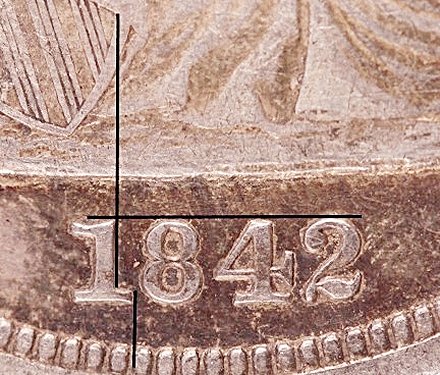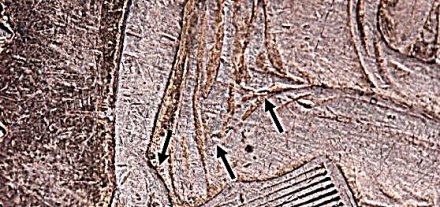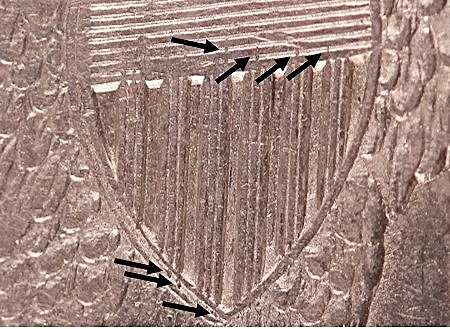|
|
Comments: This is the only use of Obverse 5 and the third of four uses of Reverse B. |
Obverse 5 The photo below shows the Obverse 5 attribution grid.  1842 Obverse 5 attribution grid Obverse 5 exhibits small die markers that can be helpful in confirming attribution. These are in the gown, a group near the left hand, and another above the apex of the shield. High magnification may be required to conclusively identify these markers. They’re shown in the following photo.  1842 Obverse 5 die markers
|
Reverse B Reverse B is very different from Reverse A. There are no die lines in the shield recesses. The best markers are the extensions of the vertical shield lines downward into the shield border, visible even on low-grade coins. Additional markers are several upward extensions of the vertical shield lines into the horizontal lines. These are notable on high-grade coins, but not nearly as reliable a marker as the lower extensions.  1842 Reverse B die markers
|
| Photo credits:
Obverse 5: 1842 NGC VF30, from the Osburn-Cushing reference collection. Reverse B: NGC AU55, from the Osburn-Cushing reference collection. |
